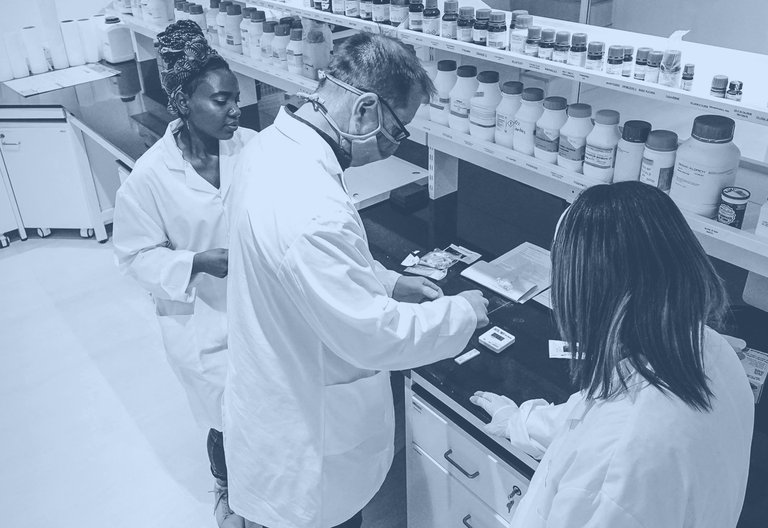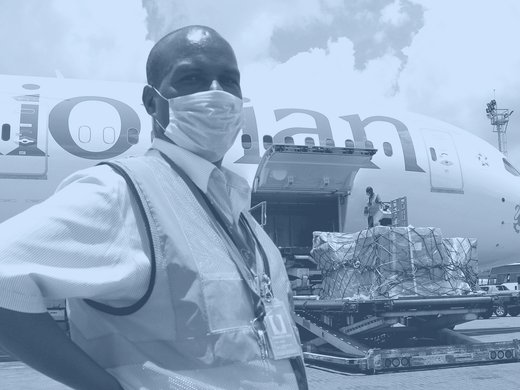he worldwide COVID-19 public health crisis highlights the inequities and biases within the international and domestic intellectual property (IP) legal orders that were already being scrutinized prior to this extraordinary global upheaval.
Starting in the early 1990s, when IP was first integrated within the multilateral trade system through the World Trade Organization’s Trade-Related Aspects of Intellectual Property Rights agreement, the dominant policy discourse has been individualistic and maximalist. IP laws and treaties exist to maximize the monopoly rights of IP rights holders. This “trade in IP” approach has legitimated an individualistic winner-take-all narrative that has benefited major producers and exporters of IP, countries and companies alike. Under this competitive and predatory paradigm, certain countries, kinds of innovation and individuals and groups are favoured over others. Indeed, this maximalist ideology has led IP-exporting nations to ramp up IP protections through regional and bilateral free trade agreements and investor-state dispute mechanisms.
In the throes of the pandemic, fear and concern have caused many countries to signal a retrenchment from global institutions toward a more protectionist future. This move suggests that IP law and practices risk becoming even more individualistic and maximalist. However, I believe that another position will ultimately prevail.
Innovation and creativity thrive in open and collaborative environments. The pandemic has taught us that successful and timely medical solutions require knowledge sharing and global cooperation at unprecedented levels. Further, the possibility that IP rights could be used to limit or even deny access to COVID-19 treatments and technological solutions is simply unthinkable during a global emergency that has put all of humanity at risk. Cooperation and collaboration will have to be the guiding principles if the world is ever going to recover from this unprecedented crisis. Finally, it is imperative to shift the discourse before new IP superpowers such as China take full advantage of a winner-take-all IP environment. China is protecting IP, especially patents, at exponential rates. It also has the advantage of being one of the few countries to control supply chains in the manufacture of equipment, tools and treatments for COVID-19. Bringing China into a new IP framework will be essential.
Prior to the pandemic, new ways of thinking about IP were already in play. These approaches advanced collective strategies that eschewed the winner-take-all model of IP ownership, challenged the legitimacy of IP maximalism, and scrutinized the structural inequalities inherent in IP laws and practices. Because of these efforts, a new framework for national and international IP will emerge from this crisis, one that is premised on greater collaboration, balance and inclusion. This is not wishful thinking on my part. We are witnessing this shift in real time during this global public health emergency.
Collaborative IP
As scientists and researchers scramble to develop vaccines, medical treatments and new technological solutions to combat the COVID-19 virus, certain stakeholders have immediately taken a competitive stance. They have staked their claims to exclusivity over the IP developed out of these global research efforts.
In contrast, many others have approached the question of IP and the pandemic from an entirely different vantage point. Multiple and diverse stakeholders including national governments, international non-governmental organizations, and IP rights holders from the public and private sectors have called for collective, collaborative and even free and open models for IP sharing. These voices, whether advocating for patent pools or pledges, generous IP licensing terms and conditions, or open science vaccine development, have overtaken those who have positioned themselves along traditional individualistic lines. This spirit of international cooperation speaks to the gravity and enormity of the COVID-19 health crisis. However, had it not been for those who had already challenged the false binary of all-or-nothing IP, the models of IP sharing currently being advanced would never have been as widely accepted.
In the post-pandemic environment, maximalist and individualist approaches to IP will give way to more sophisticated and nuanced collaborative strategies that lie along the spectrum from maximum protection to no protection at all. Whether achieved through voluntary agreements among IP rights holders or advanced through domestic and international policy, IP-sharing models will become the prevailing norm. This new norm will have the effect of tempering winner-take-all excesses.
Balanced IP
IP rights have never been — nor should they be — absolute. IP laws have always placed limits on the scope of the exclusive monopoly — whether in terms of duration, scope of protection, or legislated carve-outs for certain third-party uses. Over time, however, exceptions and limitations to IP rights have been increasingly regarded with suspicion by those who advocate for greater IP protections. These IP maximalist approaches have constrained their scope with a view to eliminating them entirely. A prime example relates to compulsory licensing provisions in domestic IP legislation. A compulsory licence permits governments to do certain things with third-party IP when the IP rights holder fails to act. Because their effect is to deprive IP rights holders of full control over their IP, compulsory licence provisions have been largely restricted in Western industrialized countries. However, the pandemic has laid bare the fact that governments must have sufficient ambit to work around IP in times of emergency. As a result, some countries, including Canada, have been amending their patent laws to expand their existing, narrow compulsory licensing rules to provide maximum flexibility to the manufacture or import of COVID-19 vaccines and other patented treatments and technologies.
A post-pandemic IP future will recalibrate domestic and international laws and treaties to ensure greater checks and balances on the IP monopoly. It will affirm the necessity of robust IP limitations and exceptions and reverse the maximalist trend that has, to date, encouraged their obsolescence.
Prior to COVID-19, countries such as Canada and the United States had already focused their attention on the question of the under-representation of many groups in the national IP system. For example, policy makers recognize that female inventors and creators struggle to secure their IP rights, due to structural biases in IP laws and practices. Similarly, Indigenous entrepreneurs confront systemic barriers to participation in the IP system, and Indigenous approaches to IP are not recognized within the existing IP legal paradigm.
Pandemic-battered economies will require an all-hands-on-deck approach to recovery. Such an effort cannot be achieved if many are excluded or challenged in their ability to engage with the IP system in a meaningful way. This approach will require a critical assessment of the biases and inequities within the current network of IP laws, treaties and practices. For both ethical and practical reasons, post-pandemic IP law and policy will encourage more diverse and inclusive pathways to IP generation and protection.
Conclusion
There is no question that reflexive IP protectionism will remain an impulse during the COVID-19 pandemic. However, this impulse must not be permitted to carry the day. The elements for progressive approaches to IP are already in place.
How international institutions, national governments and individual IP rights holders handle IP during this COVID-19 pandemic will be the litmus test for what will emerge post-pandemic. If countries hoard medical supplies and IP rights holder extract usurious prices for access to treatments and supplies, then the fallout from these individualistic actions will compel an alternative IP future the next time around. If, on the other hand, the global community emerges from the COVID-19 pandemic having adopted collaborative IP strategies that ensure equitable and fair access to COVID-19 treatments and supplies, the success of this approach and the global cooperation it will have engendered will carry forward into the future. Either way, a new IP framework will become the international norm.
A post-pandemic IP legal order will be built on greater collaboration, balance and inclusion. By imposing checks and balances on individualistic and maximalist approaches, it will curb the abuses of the current IP environment, which privileges the dominant players. Greater cooperation among countries will level the field should any IP superpower, current or future, refuse to play by these new rules. This framework will provide a fairer, stronger and more resilient system to ensure that IP facilitates, rather than impedes, solutions to other intractable global challenges, with the climate crisis at the top of the list.





